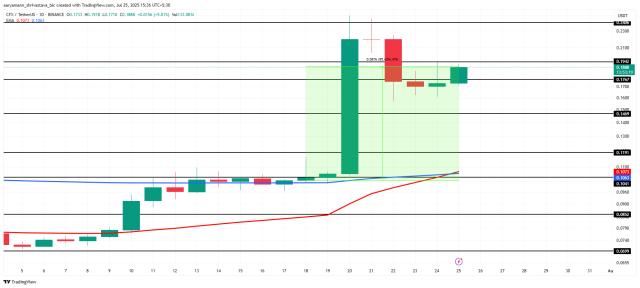Sal Gilbertie, CEO of Teucrium Trading, shares his journey of approaching cryptoasset ETF and the decision to invest in XRP, despite facing many challenges from the SEC.
He analyzes the SEC's strategic changes regarding future Bitcoin ETF and explains the reason for choosing to develop a leveraged XRP ETF product, based on Ripple's practical potential in improving cross-border payments.
- Teucrium Trading had to withdraw its future Bitcoin ETF filing due to the SEC's requirements for low liquidation.
- The SEC's changing policy prioritizes a faster approval process, causing Teucrium to lose its advantage over major players.
- Teucrium chose to push forward a leveraged XRP ETF based on Ripple's vision and commercial effectiveness.
What challenges did Teucrium Trading face with cryptoasset ETFs?
Sal Gilbertie revealed that initially, the SEC rejected the future Bitcoin ETF filing due to low market liquidation, requiring Teucrium and many other companies to withdraw.
This caused them to temporarily suspend filing but continued to closely monitor market fluctuations. When liquidation improved, the company confidently resubmitted its filing to continue the approval process.
How did the SEC's regulatory changes affect Teucrium?
By shifting the ETF approval method to the 1940 law with a shortened timeframe of 75 days, the SEC created favorable conditions for large corporations like BlackRock and Fidelity.
This change surprised and caused opportunity losses for Teucrium, despite being an early filer. This event also became an important document in Grayscale's lawsuit against the SEC, which Grayscale won.
The sudden change in the approval process "greatly confused us" and seriously affected Teucrium's market opportunities.
Sal Gilbertie, CEO Teucrium Trading, 2024, interview with Thinking Crypto
Why did Teucrium decide to invest in a leveraged XRP ETF?
Sal Gilbertie said they are not fans of coins like Ethereum or Solana but highly value Ripple's mission in modernizing the international payment system.
Ripple focuses on improving cross-border money transfer speed and efficiency, replacing the outdated SWIFT system. Teucrium believes this solution will have a significant and sustainable long-term impact.
"Anything that helps accelerate the system is a promising and rational direction."
Sal Gilbertie, CEO Teucrium Trading, 2024, interview with Thinking Crypto
Teucrium is not directly competing with major players in basic XRP ETF but chose to develop a specific leveraged ETF to leverage its strengths in the derivative market and create differentiation.
Frequently Asked Questions
What is a cryptoasset ETF?
A cryptoasset ETF is an investment fund that mimics the value of cryptoassets, helping investors access effectively without direct ownership, ensuring safety and quick diversification.
How does the SEC influence cryptoasset ETF development?
The SEC regulates rules that determine approval time and liquidation standards, directly affecting the speed and success potential of cryptoasset ETFs.
Why is XRP highly regarded in the payment sector?
XRP is designed to increase transfer speed and reduce cross-national payment costs, replacing the traditional SWIFT system with modern technology, promoting faster and safer payments.
What makes leveraged ETFs different?
Leveraged ETFs use derivative tools to double or triple the price fluctuation of the underlying asset, suitable for high-risk-tolerant investors expecting quick profits.
What role did Teucrium play in the Grayscale lawsuit against the SEC?
The approved future Bitcoin ETF filing by Teucrium became an important piece of evidence in the Grayscale lawsuit against the SEC, helping to create a legal precedent for the cryptoasset financial sector.






